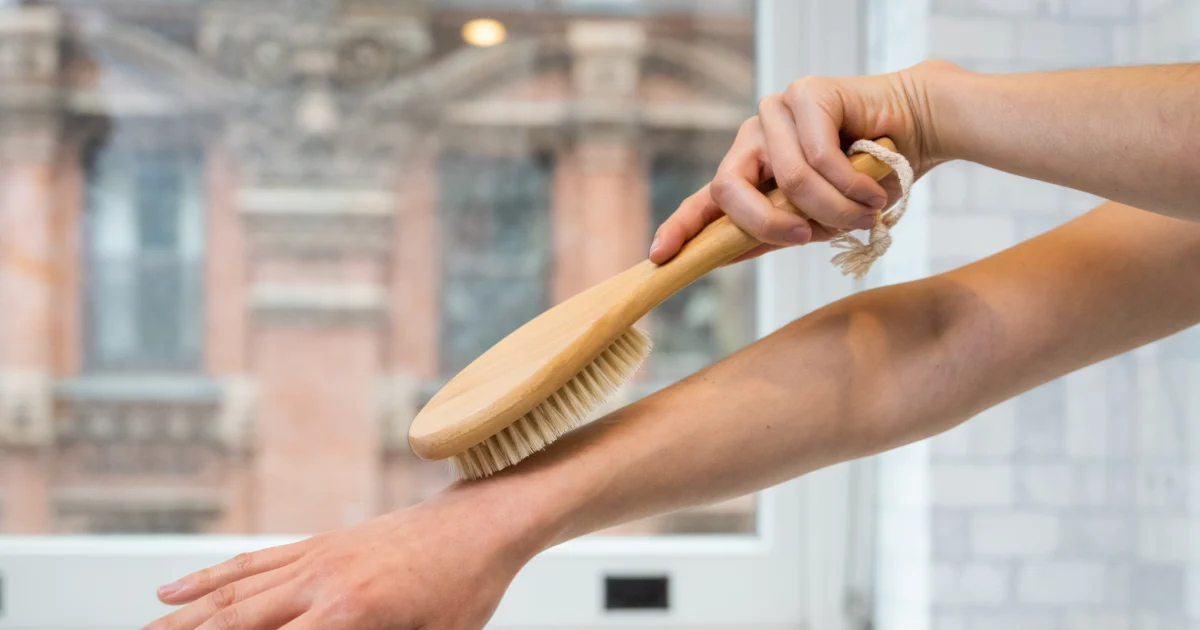Dry brushing, an ancient Ayurvedic practice dating back over 5,000 years, has gained remarkable popularity in modern wellness circles for its potential to support lymphatic health. This simple yet effective technique involves using a natural bristle brush to gently massage the skin in specific patterns, potentially stimulating the body’s lymphatic system and promoting wellness. The lymphatic system plays a crucial role in immune function, toxin removal, and fluid balance throughout the body.
While scientific research on dry brushing remains limited, many practitioners report experiencing increased energy, improved circulation, and enhanced skin texture. Understanding how this time-tested practice may benefit your lymphatic health can help you make informed decisions about incorporating it into your wellness routine.
Understanding the Lymphatic System and Its Importance
The lymphatic system serves as your body’s natural drainage network, responsible for filtering toxins, fighting infections, and maintaining fluid balance. This complex system includes lymph nodes, vessels, and organs that work together to remove waste products, dead cells, bacteria, and other harmful substances from your tissues. When functioning optimally, the lymphatic system supports immune function and helps prevent the buildup of toxins that can lead to swelling and illness.
Unlike the circulatory system, the lymphatic system lacks a central pump like the heart, relying instead on muscle contractions and external stimulation to move lymph fluid throughout the body. This is where dry brushing may offer potential benefits, as gentle pressure and movement can help stimulate lymphatic flow.
How Dry Brushing May Support Lymphatic Drainage
Dry brushing is believed to support lymphatic health through several mechanisms. The technique involves using a brush with coarse bristles to stimulate the skin and underlying tissues, potentially encouraging the movement of lymph fluid toward the lymph nodes. The superficial lymphatic vessels lie just beneath the skin’s surface, making them accessible to the gentle pressure applied during dry brushing.
The practice typically involves brushing in the direction of the heart, following the natural flow of lymphatic drainage. This directional approach may help support the lymphatic system’s natural function of returning fluid to the bloodstream. Additionally, dry brushing may stimulate key lymph node sites located in the neck, armpits, elbows, groin, and knees.
Additional Health Benefits Beyond Lymphatic Support

While lymphatic support is a primary focus, dry brushing offers several other potential health benefits. The practice provides excellent exfoliation, removing dead skin cells and unclogging pores, which may facilitate the body’s natural detoxification process through the skin. Many practitioners report improved skin texture, with skin appearing smoother, softer, and more radiant after regular dry brushing sessions.
The technique may also boost circulation by increasing blood flow to the skin’s surface. This enhanced circulation can provide oxygen-rich blood to tissues and organs, potentially improving energy levels and supporting health. Some people experience an invigorating effect similar to that of a massage, with increased alertness and mental clarity following dry brushing sessions.
Proper Technique and Safety Considerations
To maximize potential benefits while ensuring safety, proper dry brushing technique is essential. Use a natural bristle brush with a long handle to reach all areas of your body. Begin with gentle pressure and gradually increase as your skin becomes accustomed to the sensation. Always brush toward the heart, starting from your feet and working upward.
It’s important to note that dry brushing should be done on dry skin before showering or bathing. Avoid brushing over sensitive areas, wounds, moles, or irritated skin. If you have sensitive skin, consider using a softer brush or even a dry washcloth to achieve similar benefits.
Scientific Evidence and Expert Recommendations
While dry brushing has gained popularity, it’s important to acknowledge that scientific research supporting its lymphatic benefits remains limited. Most evidence is anecdotal, with practitioners reporting positive experiences rather than controlled clinical studies. However, the practice is generally considered safe when performed correctly and gently.
Healthcare professionals recommend consulting with a medical provider before beginning any new wellness practice, especially if you have existing health conditions or concerns about your lymphatic system. Dry brushing should complement, not replace, any medical treatments for lymphatic issues.

